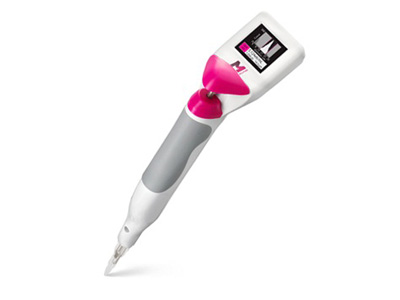Why you need precise cell counts
Cell counts have always been used to monitor cell health and proliferation, assess immortalization or transformation, seed cells for transfection or infection and prepare for cell-based assays. But perhaps too often, cell-based studies are based on imprecise, image-based cell counts or subjective assessments of cell density, like “80% confluency.”
As more research reveals the profound biological effects of changes in cell density—such as paracrine signaling, cell adhesion and migration, differentiation and redox signaling—precise cell counting becomes key to discovery. Follow these tips for obtaining precise cell counts to give every experiment the best chance to yield biologically meaningful data.
Tip #1: Use the Coulter principle
The majority of cell biologists still use a hemocytometer and a microscope to count cells. Hemocytometry is inexpensive but risks errors from uneven cell distribution in the sample, too many or too few cells in the sample, subjective decisions as to whether a given cell falls within the counting area, contamination, user-to-user variation and variation in hemocytometer filling rate. Many researchers have switched to automated cell-counting devices, including image-based counters, systems that detect cells using the Coulter principle or flow cytometry.
The Coulter principle is the most precise method for counting cells (average coefficient of variation is usually less than 4%) and remains the gold standard. Cells flow, one by one, through an aperture within an electrical sensor. When a cell enters the aperture, voltage increases in proportion to cell size. Both benchtop and handheld cell counters are available that exploit the Coulter principle to deliver precise cell counts as well as cell size distributions.

Data generated by Coulter principle-based cell counters not only deliver precise cell counts but also display average cell size and population-distribution information.
Tip #2: Be sure you have a single-cell suspension
As all cell biologists know, cell clumping is the enemy of precise cell counting. Fortunately, a variety of reagents and techniques are available to dissociate even the most persistently clumpy cell lines. Enzymatic dissociation can be achieved using binary combinations of trypsin, collagenase, dispase, pronase and other enzymes, with serum quenching and washing in between. However, conditions should be carefully optimized, because overtreatment with enzymes may actually damage membranes and increase clumping.
One side benefit of using a Coulter principle-based cell counter is that you’ll also obtain a histogram of the size distribution of your cell population, which can tell you how monodisperse your sample is.

Counting a PBMC population with a handheld, automated cell counter yields a histogram with three distinct peaks corresponding to 1) dead cell/debris, 2) lymphocyte and 3) monocyte fractions.
Tip #3: Start with a representative, bubble-free cell sample
Make sure the cells you are counting are well mixed, or you’ll end up with local variations in cell density that could introduce error into your cell counts. Some cell-counting methods that rely on loading cells into a counting chamber generate error when there’s an air bubble in the chamber. Use a cell counter that doesn’t involve loading a chamber, and you won’t need to worry about air bubbles.
Tip #4: Mind the gap
For your cell counts to be the most representative, perform cell counts as close as possible in space and time to the point of use. Many cells can clump or lose viability in minutes. This means that transferring cell samples from a culture hood to a distant benchtop or core-lab counting instrument can introduce errors. Using a handheld, automated cell counter without leaving the culture hood is the best way to obtain an accurate snapshot of your culture.

Use a handheld, automated cell counter to count cells accurately without leaving the culture hood.
Tip #5: Make sure your cell diameter and starting dilution are compatible with your counting method
All counting methods, whether image-based or Coulter principle-based, exhibit greatest precision within a specified operating range of sample concentration (at least 50,000 cells/mL) and cell diameter. Check your instrument specifications when preparing a sample, to obtain the most accurate counts. Coulter principle-based cell counters typically can count cells between 4 and 25 microns in diameter, depending on the instrument’s aperture size(s). Cell counters with multiple aperture-size options are a good choice when working with a wide variety of cells and diameters. Particularly small cells (such as some blood cells) can be prepared in a slightly hypotonic solution to increase their diameter enough to generate an accurate count.
Share precise cell counting with your friends!
Whatever method you choose for counting cells, it’s important that the method be standardized in detail, so all researchers working together on a given project, in one lab or around the world, can easily reproduce each other’s data. Fortunately, technological advances in counting technology are minimizing user-to-user variations in cell counting. So share these tips with your friends, report your methods in detail and watch your research flourish.
Chandreyee Das, Ph.D. is a Senior Technical Writer at EMD Millipore.
Related Products from: EMD Millipore